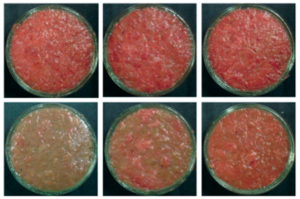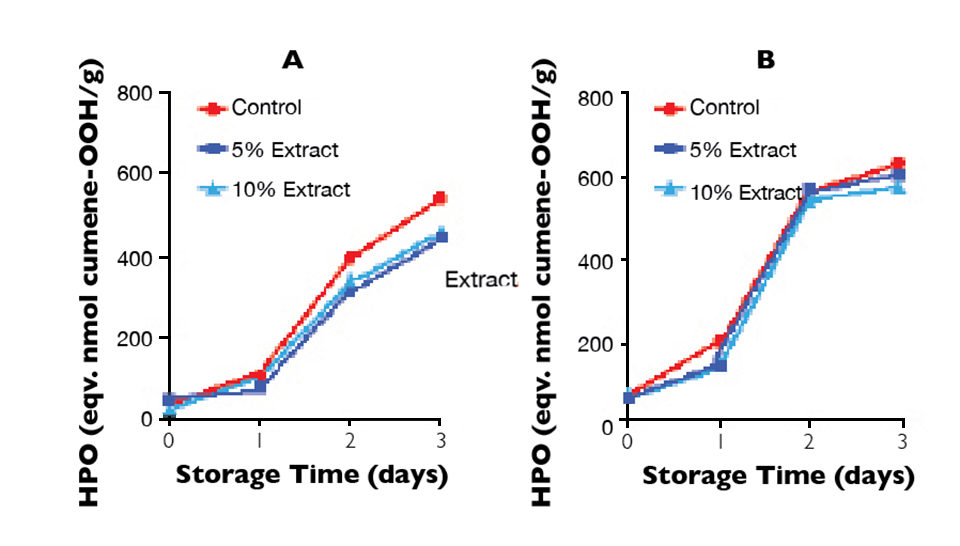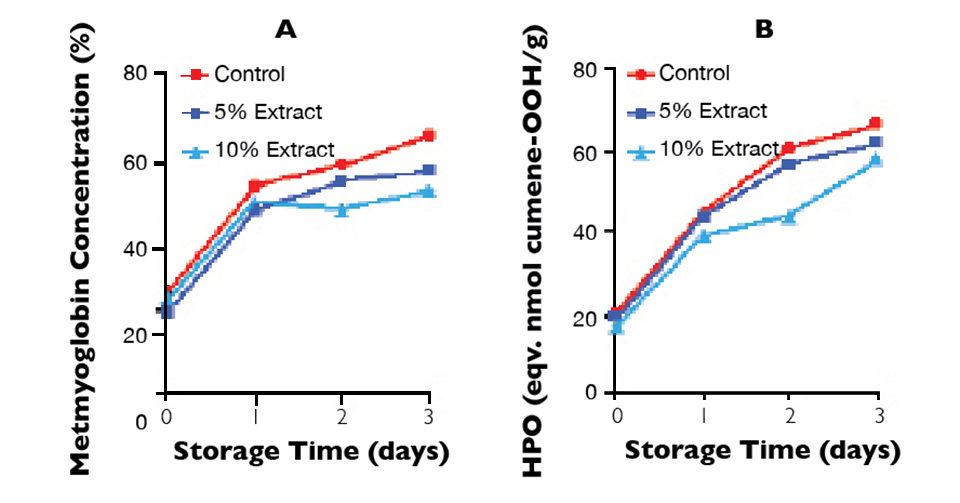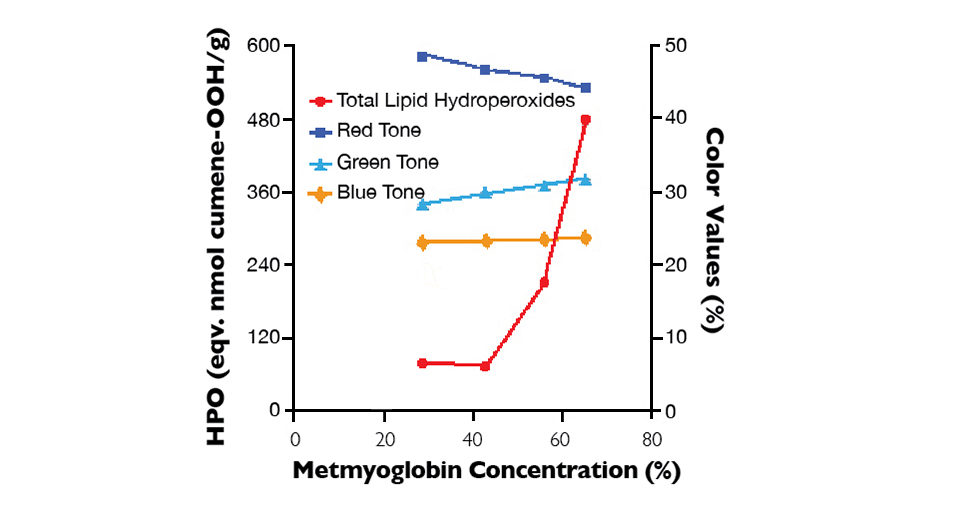Extract might act as an antioxidant to suppress oxidation of myoglobin and lipid

Yellowtail (Seriola quinqueradiata) is an important commercial fish species that is cultured mainly in the southern parts of Japan. The fish are usually distributed to markets fresh on ice. Browning of the dark meat during distribution is a serious problem that results from oxidation between myoglobin and lipid in the fish flesh. The discoloration occurs more rapidly when frozen fillets or slices of yellowtail are thawed.
To control the darkening of fish meat, dietary supplementation with antioxidants has been considered effective. Most consumers tend to prefer foods containing natural additives – such as extracts from fruits and vegetables – over those with artificial food additives.
Mushroom extract
The cultivation of mushrooms has become increasingly popular due to several new uses for mushrooms. Along with the greater cultivation has come an according amount of solid waste from the spent mushroom culture medium, which has been increasingly discarded as industrial waste.
Previous studies have shown that certain mushrooms have antioxidative activities. Active compounds, including certain phenolic compounds, ergothioneine and polysaccharides, have been found in the extracts of different species of mushrooms.
Feeding trial
In a feeding trial carried out in Nagasaki prefectures in Japan, the authors prepared a hydrophilic extract with hot water from the spent culture medium of Lenti-nula edodes to examine its effects on the lipid and color of the dark meat of yellowtail.
Two-year-old yellowtail with 4.1 ± 0.1 kg body weight and 61.6 ± 1.1 cm fork length were selected at random, divided into three groups and reared in three cages. Fish in all three groups were fed 50 g of a commercial yellowtail diet daily during the first week of the feeding trial.
After this adaptation period, one group of fish was daily fed 50 grams of the commercial diet with 5 percent mushroom extract, and another received the same diet with 10 percent mushroom extract. Fish in the control group were continuously fed the commercial diet without the extract supplementation. After two weeks of feeding, the fish in all groups did not receive feed for five days.
Results
There was no mortality during the feeding and following non-feeding periods. Changes in fork length, body weight, liver weight and coefficient of fatness of the yellowtail during the feeding period reflected no significant differences among the three groups of yellowtail.
Changes in total lipid hydroperoxides (HPO) of yellowtail dark meat during chilled storage are shown in Fig. 1. HPO accumulation in the dark meat of the control yellowtail increased with prolongation of storage time. After feeding the mushroom extract supplement for two weeks, the accumulated amounts of HPO were significantly (P < 0.05) suppressed when compared to those of the control group after three days of chilled storage at 0 to 2 degrees-C (Fig. 1A). However, changes in the HPO content of dark meat were not significantly different between the treatment groups fed the mushroom supplement and the control group after five days of starvation (Fig. 1B).

Changes in the percentage of metmyoglobin (metMb) in yellowtail dark meat during chilled storage for three days are shown in Figure 2. The formation of metMb in the dark meat of yellowtail fed mushroom extract at the 5 and 10 percent levels was significantly (P < 0.05) delayed when compared to the control group (Fig. 2A). The delay in metMb formation in dark meat by feeding the mushroom extract supplement remained five days after ending feeding (Fig. 2B).

The changes in color of yellowtail dark meat correlated with HPO and metMb concentrations as shown in Fig. 3. These results strongly supported the concept that the discoloration of yellowtail dark meat was caused by concerted oxidation between myoglobin and lipid. The process can lead to formation of metMb, which continuously plays a role as an intermediate to oxidize lipid in fish meat and thus result in discoloration.

By visual comparison, the red color of the dark meat of yellowtail fed the mushroom extract supplement at the 5 percent and 10 percent levels still remained after three days of chilled storage, whereas the dark meat of control fish turned completely brown under similar storage conditions. In this case, the mushroom extract might act as an antioxidant to suppress oxidation of myoglobin and lipid. Therefore, the fresh color of yellowtail dark meat can be stabilized.
(Editor’s Note: This article was originally published in the May/June 2011 print edition of the Global Aquaculture Advocate.)
Authors
-
Huynh Nguyen Duy Bao, Ph.D.
Faculty of Aquatic Products Processing Technology
Nha Trang University
02 Nguyen Dinh Chieu
Nha Trang, Vietnam[109,111,99,46,111,111,104,97,121,64,111,97,98,100,110,104]
-
Toshiaki Ohshima, Ph.D.
Department of Food Science and Technology
Tokyo University of Marine Science and Technology
Tokyo, Japan
Related Posts

Health & Welfare
Advances in yellowtail larval rearing
The University of the Canary Islands in Spain is researching yellowtail broodstock management and larval rearing to promote aquaculture diversification in Europe.

Aquafeeds
A look at corn distillers dried grains with solubles
Corn distillers dried grains with solubles are an economical source of energy, protein and digestible phosphorus to reduce feed costs and fishmeal usage.

Health & Welfare
Long-chain PUFA requirements of juvenile California yellowtail
This study shows that soybean oil can totally replace fish oil in California yellowtail aquafeeds without affecting production performance and reducing the omega-3 fatty acid profile of fish tissues, as long as acceptable levels of ARA and DHA are provided.

Health & Welfare
Lipid oxidation results from heme catalysis
Iron compounds in fish contribute significantly to lipid oxidation in addition to oxidation mediated by enzymatic activity. The main iron-containing compounds are myoglobin and hemoglobin.


